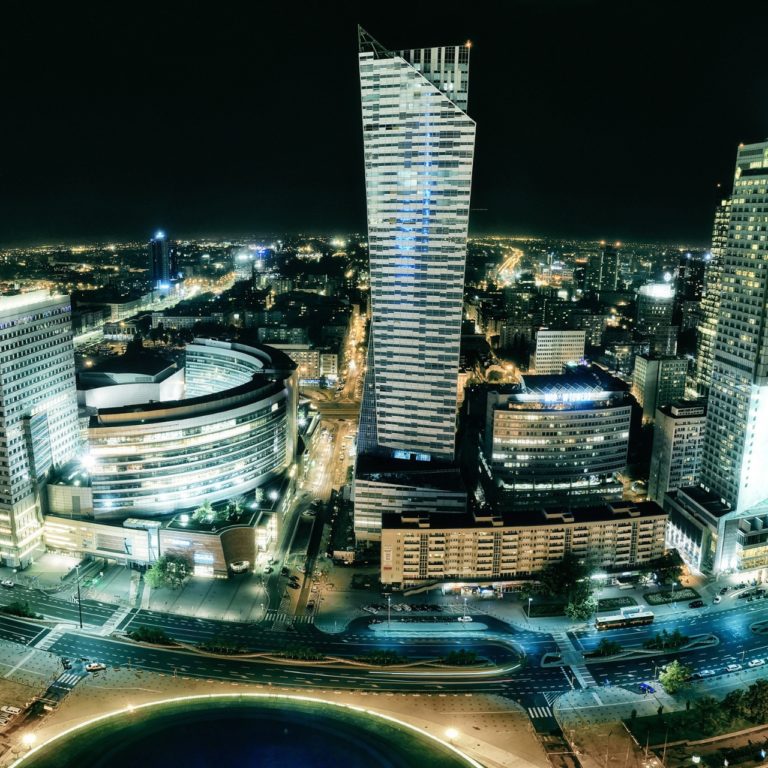Polish
Professional Polish translation services for all major industries and business sectors

With our team of professional Polish language native translators, we provide ISO-certified Polish-to-English and English-to-Polish translation services for all major industries.
Our Polish linguists provide high-quality translations for global corporations, small businesses, startups, and organizations.
If you’d like to get a free quote from us, please feel free to contact our sales team, and we’ll be happy to assist you.
Poland: The Powerhouse of US Investments
According to the US Department of State, “Relatively strong economic growth, a large domestic market, tariff-free access to the European Union (EU), political stability, and a relatively low-cost well-educated workforce are prime reasons that U.S. companies do business in Poland. Opportunities for trade and investment have attracted foreign investors into all sectors, and the United States is Poland’s top non-EU investor. In 2020, U.S. goods imports from Poland totaled $8.3 billion.
So, if the US is Poland’s top non-EU investor, it means that many US companies do business with the Polish market on a daily basis. They hold meetings, negotiate (either in person or remotely) and no matter how much we’d like to believe that English has become the lingua franca of international trade, studies show that only a fraction of the world’s population feels comfortable conducting business in English.

Our clients say




Why choose LingPerfect for your Polish translation & localization needs?

1000+ Native Polish translators with industry-specific expertise
Every industry has its own specificities. That's why we always pair you with certified professional translators with domain-related experience.

ISO 9001:2015 certified quality assurance process
Our rigorous QA processes and KPIs make sure your localized websites are error-free and adhere to your terminology and tone of voice.

Scalability & boutique approach with dedicated staff
Whatever the size of your project, we always customize the approach to best suit your needs. And you get a dedicated account manager to assist you in every step of the process.
A One-Stop for All Your Polish Language Needs:
Polish Website Localization Services

According to the Central Statistical Office, only approximately 37% of the Polish population speak English. This data, together with the fact that 72.4% of internet users confirmed they are more likely to buy from a website with information in their native language means that if you want your website to be successful in Poland, you need to have it localized in Polish.
When it comes to Polish, many words are difficult to translate into English. In these cases, the translator needs to capture the local cultural nuances. In other words, the text requires localization, i.e. an adaptation to the target country’s language and culture, making it understandable by locals.
There is, for example, a very Polish word: “Się”. It refers to the “self” (like oneself, myself, herself, etc.), and there is no exact equivalent in English. It is used in sentences such as “Ja nazywam się Agnieszka”. The literal English translation would be “I call myself Agnieszka,” but it would simply sound… weird. The culturally correct translation would be, “My name is Agnieszka.”
However, if you were to do the reverse, i.e. translate from English into Polish, you would need to remember that the się word is necessary for a more culturally appropriate translation.
In general, Website localization is more than just translating words: it means adapting your whole website experience so that it feels like it was originally made in the target language. With LingPerfect’s Polish website localization services, your web audience will intuitively feel the content has been written FOR them.
Accessible Polish Interpreter Services
In-person interpreters remain inevitable for certain situations. Nowadays, however, there is no need to fly your Polish interpreter across the globe anymore.
Technology and internet access have helped the interpreting sector to become more flexible & cost-effective than ever.
Only ten years ago, interpreter services were reserved only for the most important meetings & congresses. Today, you can hire your Polish interpreter remotely with a few clicks.
Types of Interpreter Services we Provide
Simultaneous interpreting
Whispering (chuchotage)
Consecutive interpreting
Over-the-phone interpreting
Liaison interpreting
Video remote interpreting
Request a Free Quote
Interesting Facts about the Polish Language
Polish is a Slavic Language
Polish originated in the 10th century, with the development of the Polish state. It existed only as a spoken language until the advent of Christianity, when the Latin alphabet was adopted and Polish became a written language.
There Are Over 50 Million Polish Speakers Worldwide
Polish is, clearly, the official language of Poland. However, the Polish diaspora (also known as Polonia) also speak Polish, which means that Polish speakers around the world are well over 50 million.
In particular, there are large Polish communities in Canada (mainly in Toronto and Montreal) and in the United States, where Polish Americans amount to an astounding 11 million.
English Uses Several Food-Related Loanwords that Are of Polish Origin
Here are a few examples:
Bigos – a stew made with meat and cabbage
Pierogi – semicircular dumplings of unleavened dough with various fillings
Kielbasa – the traditional seasoned sausage
Polish Words Can Be Long. Very Long.
In Polish, you can create adjectives by combining numerals and nouns. Dziewięćsetdziewięćdziesięciodziewięcionarodowościowego, for example, is considered the longest word in the Polish language. It is an adjective in the genitive case and means “of nine-hundred and ninety-nine nationalities.”
In general, as with many other languages, Polish sentences tend to be longer than English sentences (up to 20% to 30% longer). This fact should be considered when preparing texts for brochures or other published documents, as DTP could be an issue.
As far as DTP is concerned, remember that in Polish you cannot end a line of text with a one-letter word. You should therefore make sure all one-letter words are moved to the following line.
So Many Letters…
We bet you never stopped to consider how lucky we are, with our 20 consonants and 5 vowels… A Pole’s life is made much harder by a seriously complex alphabet, with 23 consonants and 9 vowels, some of which are definitely peculiar!
To make things more confusing, the Polish alphabet includes a whole series of many diacritic signs (Ą, Ć, Ę, Ł, Ń, Ó, Ś, Ź, Ż), several digraphs (CH, CZ, DZ, DŹ, DŻ, RZ, SZ) and even one trigraph (DZI).
Plus, forget about letters Q, V, X: they do not exist in Polish and only appear in some loanwords! This means that if you’re translating (or better, transcreating) advertising material into Polish you need to be aware of this. Take, for example, Sephora’s BUXOM – BIG, BOLD, SEXY – XTROVERT MASCARA. A skilled Polish translator would come up with an equally effective slogan for the product without using the letter “x”.
Polish Varieties And Dialects
The official language of Poland is, as we said, Polish. However, there are various Polish dialects, each associated with a specific geographical region and corresponding to ancient ethnic or tribal divisions. The four main varieties of Polish are:
- Greater Polish, which is spoken in the western part of the country;
- Lesser Polish, south and southeast;
- Masovian, central and eastern parts of Poland;
- Silesian, spoken in the southwest
- Northern Kresy, spoken along the border between Belarus and Lithuania.
- Southern Kresy, spoken in isolated pockets in Ukraine.
Elements from these dialects or varieties can sometimes come up in Polish texts and can add to the linguistic complexity of the Polish language.
Polish Translation Tips
1. Grammar Intricacy
Polish and English grammar are very different, and there are no easy conversion rules between the two languages. In particular, Polish is considered one of the most difficult languages in the world, grammar-wise, and translating it into English brings with it various challenges.
Take for example, a simple word: number two. In English, it’s easy, you can’t get it wrong: two is two (regardless of gender).
But if you’re attempting a Polish translation, well, just remember there are 17 different ways to say “two” in Polish. They depend on the noun, adjective, and pronoun they relate to…
- dwa
- dwie
- dwoje
- dwóch (or dwu)
- dwaj
- dwiema
- dwom (or dwóm)
- dwoma
- dwojga
- dwojgu
- dwojgiem
- dwójka
- dwójki
- dwójkę
- dwójką
- dwójce
- dwójko
And that doesn’t even include the different ways of saying “second,” or “double,” or “pair.”
2. Polish needs more space
Punctuation in English and Polish is different.
A bit like French, the Polish language likes its space and it is common practice to use spaces before colons and semicolons, exclamation and question marks, as well as after opening and before closing quotation marks.
It may seem a minor, virtually inconsequential fact, but it needs to be taken into consideration if space is tight.

















